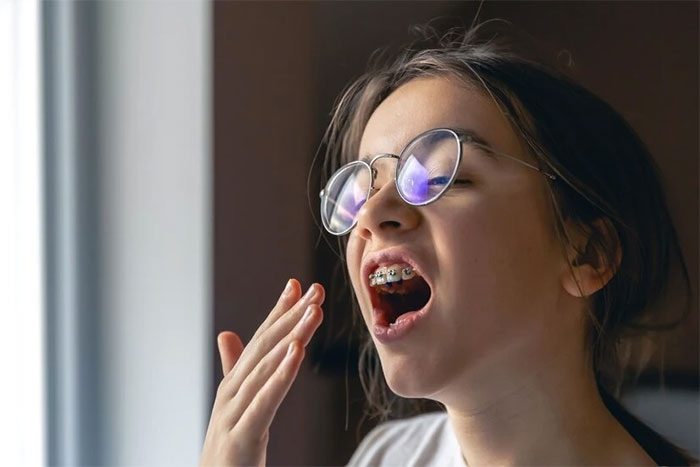Orthodontics may seem like a modern invention, but few know that it has a long history. Many ancient cultures developed surprisingly advanced methods to straighten and preserve the integrity of teeth.
Healthy teeth and an attractive smile have long been regarded as desirable traits. Numerous ancient civilizations employed rudimentary forms of braces to straighten crooked teeth while the individuals were alive or to keep them aligned and intact in the afterlife.
Common materials used for braces in the ancient world included gold, metal, or catgut. Over time, other materials such as platinum, silver, steel, wood, ivory, and copper were also used for orthodontic purposes.
Ancient Civilizations That Used Braces
In Egypt, the remains of an Egyptian mummy were discovered with metal bands on the teeth held in place by catgut (derived from the intestines of sheep or horses), functionally acting like the wires in modern braces—applying pressure to the teeth and causing them to shift.
The Egyptian culture placed significant importance on the afterlife, which is why braces were often used on the deceased rather than the living.
Cornelius Celsus Aulus (26 BC – 50 AD) was an ancient Roman who dedicated his life to the research and development of medical practices.
Celsus noted a patient who used finger pressure to push his teeth into a more aligned position. Through detailed observations, Celsus hypothesized that teeth could be repositioned and self-aligned due to prolonged finger pressure.

Ancient Romans were the first civilization to use braces to align teeth while alive. (Illustration).
He stated: “If baby teeth remain when permanent teeth grow in, the permanent teeth will be misaligned. In that case, the baby teeth must be extracted, and finger pressure should be applied daily to move the misaligned permanent teeth into the correct position.”
Furthermore, the ancient Romans were the first civilization to use braces to align teeth while alive. Fine gold wire (referred to as ligature) has been found threaded through teeth in several Roman burial sites.
When Was Modern Orthodontics Invented?
Modern orthodontics was invented in 1819 by Christophe-Francois Delabarre. The Frenchman advanced the field of dentistry in the 1700s, with notable advancements including custom dental protective devices and the removal of wisdom teeth to manage overcrowding.
However, it was Delabarre who created the orthodontic technique as we know it today. He devised a wire that was fitted over both upper and lower teeth, worn for an extended period to straighten them.
It wasn’t until 1997 that Zia Chishti, a Stanford graduate, inspired by his own orthodontic treatment, envisioned a set of clear plastic aligners that could perform the same function as traditional metal braces without the need for wires or frequent adjustments.
He collaborated with Kelsey Wirth—a fellow Stanford graduate—to create custom clear aligners using the latest computer software. They named their invention Invisalign. Although Invisalign was invented in 1997, it wasn’t commercially available until 2000.
The Father of Orthodontics
Edward Angle (1855-1930) is known as the “Father of Orthodontics.” Angle’s first classification of malocclusion from 1899 is still in use today.
Angle designed numerous orthodontic devices and is largely credited with advancing orthodontic treatment from a speculative process to a precise science.
Angle firmly believed that due to its complexity, orthodontics required specialized training, and he subsequently established the first postgraduate program dedicated to orthodontics. Universities worldwide have continued this training program since then, with graduates referred to as orthodontists.
What Is Orthodontics?
Initially, dentists or orthodontists will conduct a clinical examination, perform a digital scan of your teeth, take photographs of your face and teeth, and also take X-rays of your mouth and head. They will devise a treatment plan based on this information.

Metal braces are a commonly used method for orthodontics. (Photo: Freepik).
Next, they will use a device called brackets, made from metal or ceramic, in conjunction with archwires and specialized adhesive to securely attach them to the teeth. While wearing braces, they help align the teeth for a straighter smile.
The process of attaching brackets usually causes no pain and takes about 1 to 2 hours. However, you may experience sensitivity during the first week as you adjust. This discomfort can also reoccur for a few days after each adjustment appointment.
Brackets work by applying continuous tension to the teeth over an extended period. This force gradually reshapes the jawbone around the new position of the teeth.
We often think that teeth are directly attached to the jawbone, making it difficult to move them. In reality, beneath the gums is a layer of tissue surrounding the bone, which serves to anchor the teeth. This layer responds to the pressure applied by the brackets.
Archwires are periodically adjusted as your teeth slowly move into the desired position, and elastic bands are replaced after each regular check-up.
Popular Orthodontic Methods
The type of braces recommended by the orthodontist will depend on several factors, such as your age and your current dental condition. Braces are custom-designed to meet the needs of each individual.
The classic braces that most people envision are made of a metal framework and are individually bonded to each tooth. Archwires apply pressure to the teeth and jawline, while elastic O-rings connect the archwire to the brackets.
Additionally, there are several other types of braces, including:
- Clear ceramic braces that are less visible.
- Lingual braces, which are placed entirely behind your teeth.
- Invisible braces, also known as aligners, which can be removed and replaced daily.
When Did Clear Aligners Come Into Existence?
It wasn’t until 1997 that Zia Chishti, inspired by his orthodontic treatment, envisioned a set of clear plastic aligners that would function similarly to traditional metal braces without the need for archwires or the usual adjustment procedures.
He collaborated with Kelsey Wirth—a fellow Stanford graduate—to create custom clear aligners using the latest computer software.
They named their invention Invisalign, or clear aligners. Although the aligners were invented in 1997, they weren’t widely popular until 2000. Today, many different brands of clear aligners exist, including Invisalign, Spark, and 3M Clarity.
Although the history of braces dates back to ancient times, you can rest assured that the modern orthodontic devices used today are made from the most advanced technologies.
Who Can Get Braces?
Many people get braces during their teenage years, but nowadays, an increasing number of adults are choosing orthodontic methods to improve their smiles later in life.
The effectiveness of braces depends on various factors, such as the age at which you begin treatment and your treatment goals.
According to the Mayo Clinic, braces are generally effective for everyone, but results depend on the individual and their ability to follow the orthodontist’s instructions, wear the appliances, and maintain proper dental hygiene.
How Long Does It Take for Braces to Be Effective?
Treatment times vary for each person, but typically, individuals will wear braces for 1 to 3 years. To ensure braces are worn for the shortest time possible, you must carefully follow the orthodontist’s instructions.
After braces are removed, most people must wear a retainer continuously for the first 6 months. After that, you may only need to wear it at night; however, you might have to continue wearing it for many years.




















































